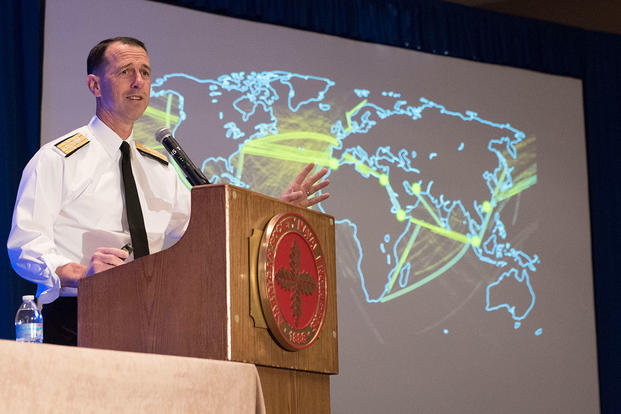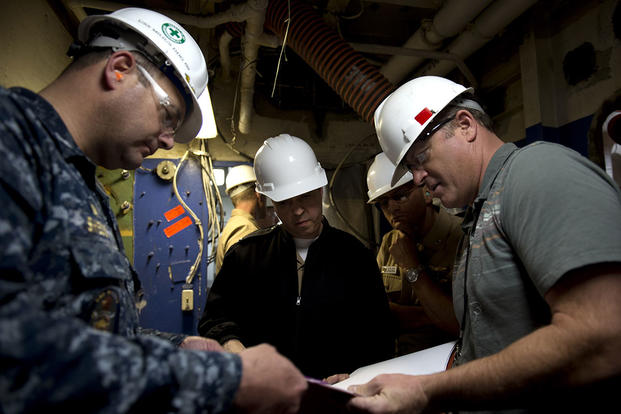SAN DIEGO — The Program Executive Office for Command, Control, Communications, Computers and Intelligence (PEO C4I), multiple Navy program offices and the Space and Naval Warfare Systems Command (SPAWAR) are knocking out milestones in the quest to virtualize training for Sailors on shipboard systems.
The team successfully executed a pre-pilot event for the Consolidated Afloat Network Enterprise System (CANES) Virtual Hosted Environment (VHE) July 1.
PEO C4I and the program offices for Battlespace Awareness and Information Operations (PMW 120), Information Assurance and Cyber Security (PMW 130), Navy Command and Control (PMW 150) and Tactical Networks (PMW 160) have partnered with SPAWAR training and cyber experts to develop a proposed virtual training solution for CANES that will evolve to include training of hosted C4I applications as well.
"Our vision is to consolidate the current 26-week training cycle for system administrators and network managers on systems like CANES, GCCS-M (Global Command and Control System-Maritime), DCGS-N (Distributed Common Ground System-Navy), Navy Tactical Command Support System and other C4I tactical networks and applications into a 16-week Networks Capabilities Course," said Sean Zion, assistant program executive officer for logistics at PEO C4I.
PEO C4I's vision to virtualize shipboard training is in line with the Chief of Naval Operations' (CNO's) "A Design for Maintaining Maritime Superiority" and the high velocity learning concept.
"I'd advocate for a shorter learning cycle — an acquisition system that gets out there, experiments faster, learns faster and shortens learning cycles so that we can adjust faster," CNO Adm. John Richardson said during a speech at an American Society of Naval Engineers conference.
Virtualization of the training environment is an example of high velocity training and supports the PEO C4I 2015-2022 Strategic Plan, which states "Employ short and long-term training strategies to improve the effectiveness and efficiency of C4I end-to-end training solutions."
The execution of the pre-pilot milestone marks the halfway point to a full CANES VHE pilot scheduled for December. CANES is the Navy's latest information technology network and is being installed on ships and submarines — prompting a need for qualified technicians skilled in managing virtual environments.
"The Navy's goal is to have CANES installed on all ships and submarines by 2022, so moving forward on virtualized training makes sense so that we're ready to efficiently support CANES fleet-wide," Zion said.
The initial PEO C4I virtual training solution involves educating Network Security Vulnerability technicians at six schoolhouses located near fleet concentration areas such as San Diego and Norfolk.
"The VHE pre-pilot testing event is tied into multiple virtual testing events leading up to migration of various network courses to the virtual environment, which will increase the Navy's ability to train a greater number of technicians to manage multiple systems that are integrated into a shipboard or shore-based virtual environment," Zion said.
Virtualizing the CANES training environment will cut costs by migrating to an enterprise virtual environment with cost savings being achieved through the virtualization of technical training equipment. That change will reduce the cost of installing, upgrading and maintaining tactical program hardware and software at multiple training sites. It will also save training travel costs by enabling training in all of the fleet concentration areas as opposed to training being limited to traditional brick-and-mortar training facilities.
Cost savings is not the only advantage of virtual training environments. The virtual environment also emulates what the information technology specialists will encounter on ships, submarines and shore facilities with CANES and can be tailored to match the unique configurations of each platform type. Having a single virtual environment allows the hosting of training management, virtual infrastructure and all of the practical hands-on training scenarios in a dedicated secure environment.





























